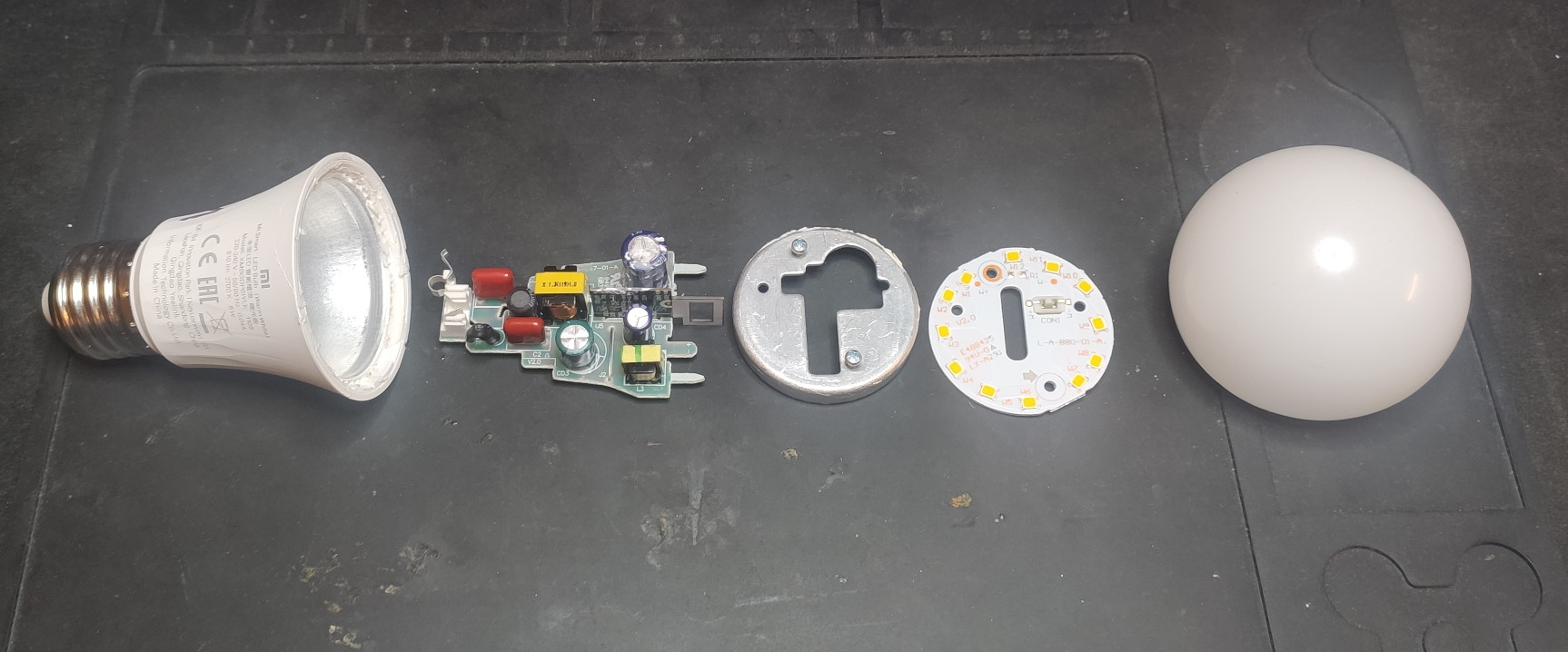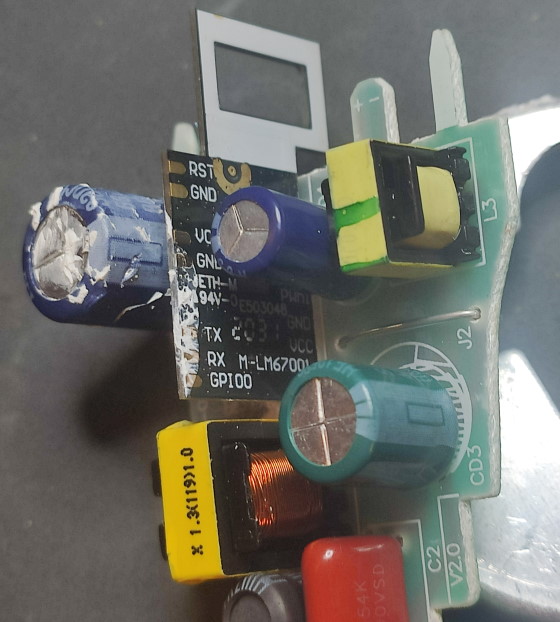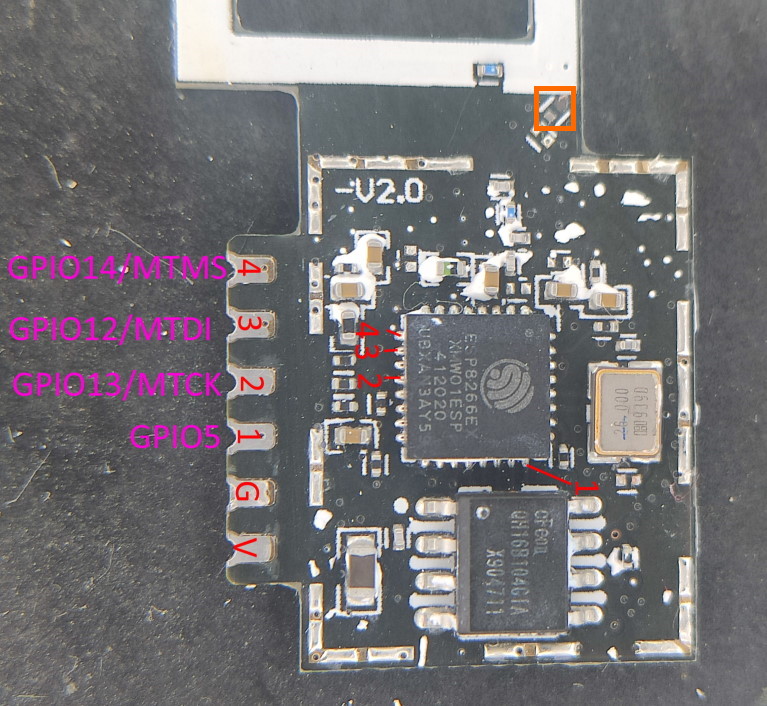Xiaomi Mi Smart LED Bulb
Basic white LED bulb without light temperature control. Uses an ESP8266 carrier board with 4 outputs (see pictures at the bottom), so RGBW or CCT bulbs using the same configurations are possible (that's why the config below defines 4 output PWMs but only 1 is used).
Model numbers:
- Warm white, E27 model: XMBGDP01YLK
- Cool white, B22 model: XMBGDP02YLK
- Cool white, E27 model: XMBGDP03YLK
Basic Configuration
substitutions:
friendly_name: Mi Bulb 01
device_name: mibulb-01
# Basic Config
esphome:
name: ${device_name}
comment: ${friendly_name}
esp8266:
board: modwifi
# WiFi connection
wifi:
ssid: !secret wifi_ssid
password: !secret wifi_password
# use_address: ${device_name}.local
ap:
ssid: ${device_name}_fallback_ap
password: !secret ap_password
# Enable captive portal
captive_portal:
# Enable logging
logger:
# Enable Home Assistant API
api:
ota:
# Enable Web server
web_server:
port: 80
# Sync time with Home Assistant
time:
- platform: homeassistant
id: homeassistant_time
# Text sensors with general information
text_sensor:
- platform: version
name: ${friendly_name} ESPHome Version
- platform: wifi_info
ip_address:
name: ${friendly_name} IP Address
sensor:
# Uptime sensor
- platform: uptime
name: ${friendly_name} Uptime
# WiFi Signal sensor
- platform: wifi_signal
name: ${friendly_name} WiFi Signal
update_interval: 60s
output:
- platform: esp8266_pwm
pin: GPIO5
id: pwm1
# frequency: 1000Hz
- platform: esp8266_pwm
pin: GPIO13
id: pwm2
# frequency: 1000Hz
- platform: esp8266_pwm
pin: GPIO12
id: pwm3
# frequency: 1000Hz
- platform: esp8266_pwm
pin: GPIO14
id: pwm4
# frequency: 1000Hz
light:
- platform: monochromatic
name: ${friendly_name} Light
output: pwm1
id: light01
# Ensure the light turns on by default if the physical switch is actuated.
restore_mode: ALWAYS_ON
default_transition_length: 0.2s
Disassembly

The bulb is glued together using some sort of hard silicone. The top cover is a slightly soft, pliable plastic while the base is metal with plastic casted right onto it.
- Don't disassemble the bulb right after turning it off! Not only it can be hot, there are capacitors inside that can hold 300V!
- Gently run a sharp knife around the bulb in the slot between the top cover and the base
- Use a spudger or a flathead screwdriver to pry open the bulb - run it around and don't force it as the plastic of the bulb's base is quite brittle
- After removing the top cover, unscrew the 2 screws and lift the PCB with LEDs
- Put the screws back in halfway and use them to pull the metal cover
- Pull the main PCB until it unhooks from rails on the inside of the base (see picture below), then twist it to side and unhook the neutral contact spring and pull the PCB out


Notes:
- The controller carrier board has the pins required for flashing easily accessible and labeled, so no further disassembly is required
- For flashing use the GND pad closer to the antenna - it has weaker thermal connection and therefore is easier to solder to
- Watch out for the miniscule components near the base of the antenna, it's easy to knock them off! See the pinout picture - the orange rectangle marks one such ripped off component that caused the WiFi signal to be super weak thus effectively killing the bulb
Pinout
